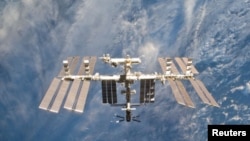The United States Agency for International Development, or USAID, is the lead development agency implementing United States development efforts through field-based programs and projects around the world. The National Aeronautics and Space Administration, or NASA, is the U.S. government agency dedicated to space exploration, scientific discovery and aeronautics research, and thus has a broad experience with Earth science research, development of Earth science information products, and technology applications. Both are leaders in their respective fields. By working together, they hope to help ease some of the most difficult problems in the developing world.
Intent on harnessing technology to help solve international development challenges such as food security, climate change, water, energy and environmental management, the heads of the two agencies, NASA Administrator Charles Bolden and USAID Administrator Dr. Rajiv Shah, signed a five-year memorandum of understanding on collaboration.
Through this partnership, said Dr. Shah, the two agencies "can apply the latest, cutting-edge technology to deliver meaningful results for people in developing countries in areas like health, food security and water. It's a prime example of our efforts to use the power of science and technology to tackle today's pressing development challenges."
Since 2003, NASA and USAID have worked together developing and expanding the SERVIR program, which uses satellite imagery to generate maps and other visual depictions of land change. Satellite imagery can be used to assess long-term erosion damage; speed aid to disaster areas; or help us understand the degree to which floods would affect a country's infrastructure and agriculture.
That is exactly how the technology was used last year in Pakistan, where disastrous floods damaged a third of the country and displaced over a million people.
USAID and NASA will also jointly support education programs such as GLOBE, or Global Learning and Observations to Benefit the Environment. GLOBE is a world-wide, hands-on science education program for primary and secondary students.
"Technologies for NASA missions have long improved life here on Earth," said NASA Administrator Charles Bolden. "Together with USAID, we'll meet even more sustainable development challenges here on the ground, solving problems for the world community. As we explore space, we'll also be exploring solutions to important health, nutritional and safety challenges in developing countries."
USAID, NASA Cooperate On Development

Intent on harnessing technology to help solve international development challenges, the heads of the two agencies signed a five-year memorandum of understanding on collaboration.




















